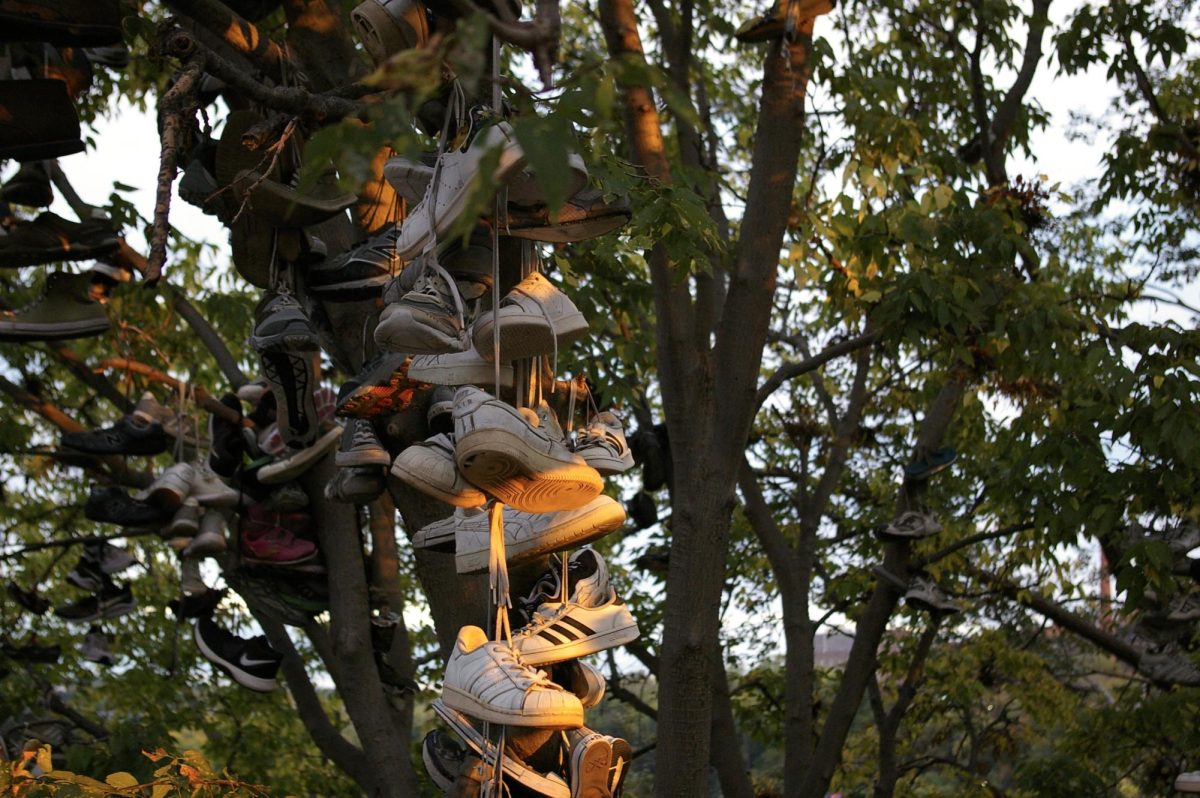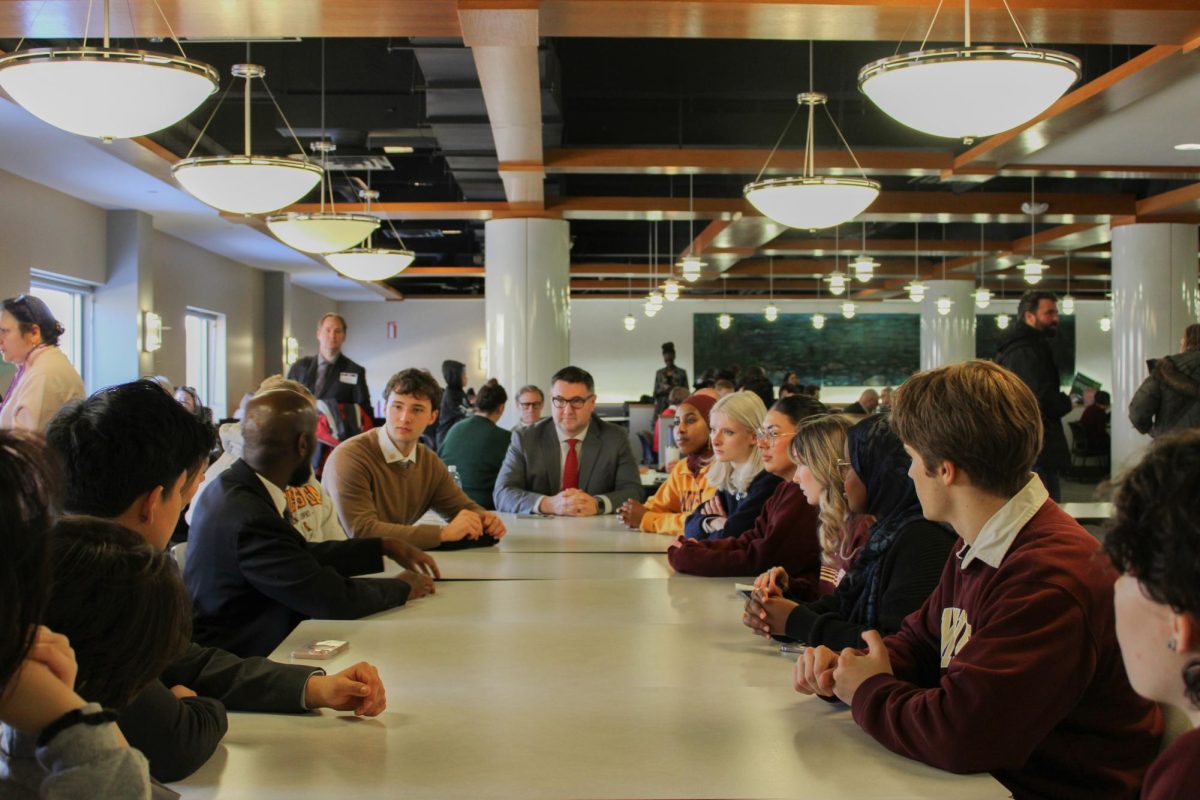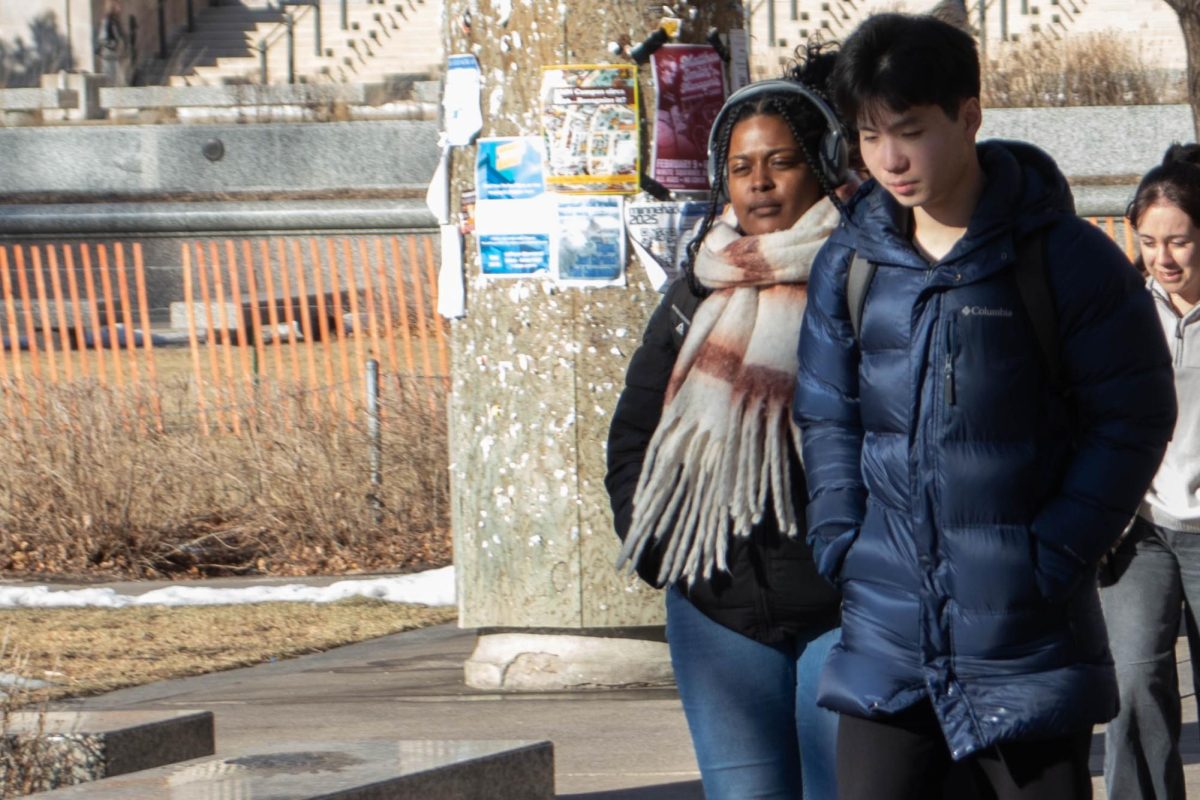At the beginning of the Washington Avenue Bridge on West Bank, hundreds of shoes hang from a tree.
Known as the shoe tree, is the only one of its kind in Minnesota, according to University of Minnesota archives. People have thrown shoes on the tree for various reasons: graduation, passing finals, weddings or just for fun, according to past Minnesota Daily coverage.
Nike cleats, winter boots, New Balance sneakers, dress shoes and many others dangle from the branches. On the soles of these shoes are inscriptions like “7th St 4ever” and “Ski U Mah.”
The shoe tree seemed to be most significant from 2000 to 2010. According to students and alumni on social media and previous coverage, the prevailing practice is for most students to throw shoes on the tree after graduation.
Some of the earliest Daily coverage of the shoe tree dates back to 1995, where the writer speculated about its origin, attributing it to aliens. The article detailed a scenario where students were allegedly abducted off the Washington Avenue Bridge, subjected to genetic experiments and left with nothing but their shoes.
There was also speculation about a bridge troll’s involvement in the shoe tree. According to this theory, the troll would mash students into pudding, tie their shoelaces together and hang their shoes from the tree.
Despite these paranormal speculations, no one has been able to pinpoint the tree’s true origin.
Tommy Lenz, a fourth-year University student, and some friends spent an hour during his freshman year rehanging shoes on the tree as a way to pass time during the COVID-19 pandemic.
“We were walking along and saw like ‘oh there’s a grocery cart’ and threw a whole bunch of shoes in it,” Lenz said. “And then we took it up the big hill behind Middlebrook and threw them back on the tree.”
Lenz added among the shoes they retrieved were running shoes, Vans, and even a pair of ballet shoes, all in various states of decomposition, some with soles falling off.
“They were nasty,” Lenz said. “Because all the ones that had fallen off were ones where the shoelaces had rotted or broken down. We all made sure to wash our hands after.”
Rowan Halm, a University alum, shared an encounter with a man at a party in 2019 who proudly claimed to have taken shoes off the tree and worn them. The shoes were Adidas sneakers that were popular at the time, showing signs of wear but otherwise structurally sound.
“They looked like they could have been someone’s frat shoes from the year before,” Halm said. That party was the first and last time she heard about the tree.
For some current students, knowledge of the tree is limited.
Hannah Dyalsingh, a fourth-year University student, only learned about the shoe tree when she passed it on West Bank.
“I just assumed you threw shoes on there once you graduated,” Dyalsingh said.
She said she is uncertain whether she will participate, though one of her friends plans to toss her college party shoes there after graduation.




















